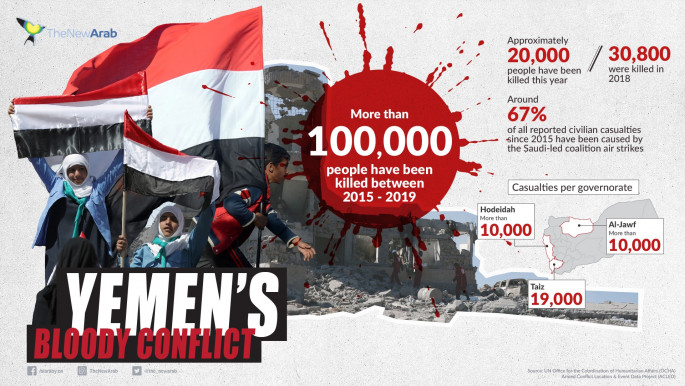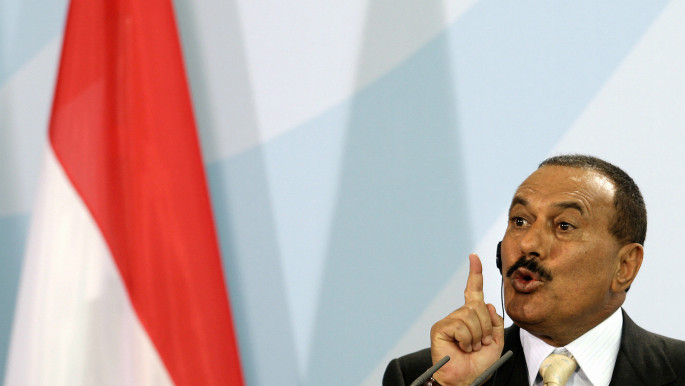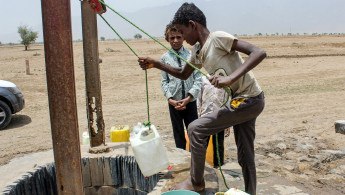Tensions in Yemen's Hodeida cripple peace hopes and further impoverish civilians
The UN-sponsored peace deal in Stockholm in December 2018 to end fighting over Yemen's Hodeida initially gave hopes to civilians and policy makers that Yemen's devastating war was winding down.
Yet with failures to fully address the conflict's root causes, fighting has continued, and Hodeida still remains the country's most dangerous area.
The violence started in June 2018, after the UAE spearheaded an operation against the Houthis to reclaim the port city, alongside the Saudi-led coalition and Yemeni government forces.
Read also: Yemen in Focus: Sanaa airport opening 'too little, too late'
Despite warnings that damaging the city would plunge Yemen into a deeper humanitarian crisis, as around 70-80 percent of Yemen's good come through Hodeida's port, the coalition pushed ahead anyway.
The governorate's militarisation still puts civilians at risks. According to civilians, Houthi-laid landmines still scatter the city and restrict civilian movements. Some have even been harshly injured. Despite peace initiatives, the Houthis have continued to lay landmines near people's houses.
Violence had also struck the city of Hays in southern Hodeida in early December, according to local residents. Mortar firing and shelling between the pro-coalition Giants Brigade and the Houthis had led Dr Al Hassan Al Taher, Hodeida's governor, once again called for scrapping the Stockholm agreement and instead 'liberating' the city from Houthi control.
 |
Despite peace measures from outside, conflicting factions still seek a military solution to Hodeida.
"I started fighting, with the support and support of our brothers in the Gulf states, and we liberated most of the coastal areas to reach at the outskirts of Hodeida," a commander of the government aligned Tihama forces told The New Arab.
The commander added that his forces oppose the Stockholm agreement, considering that it had hindered abilities to 'liberate' the city from the Houthi rebels.
"Many from community of Tuhama were forced to carry weapons and go out to defend their land and with them some south of the south against the usurping racist militias that came from The Saada Mountains impose extraneous cultures and try to blackmail the world, the countries of the region," he said.
While violence in the city had decreased at times, there have still been a total of 1,008 recorded casualties from armed violence. The number could easily be far higher as Yemen's casualties have often been under recorded, and 'official' death do not often include indirect fatalities like malnourishment and diseased like cholera.
 |
|
| Read also: Where does Yemen's GPC stand two years after the death of Saleh? |
Furthermore, as electricity and internet is often limited in Hodeida because of the fighting, communication is restricted and therefore it is difficult to fully report on the governorate.
Aid organisations cannot operate there and help civilians, with many having to close their offices after the Saudi-led coalition's offensive.
"Hodeida has been hit by severe flooding during this period and combined with the fighting this has destroyed much infrastructure and housing, meaning people are displaced and do not have necessary support systems. There is no resilience to cope with it, and this is creating more health problems," Jolien Veldwijk, acting Yemen director for CARE International, told The New Arab.
Meanwhile continued fighting has rapidly worsened Hodeida's infrastructure, weakening the governorate.
"Water, sanitation and hygiene sector suffered substantially in Hodeida from damage to infrastructure and from the ongoing blockade. High numbers of water infrastructure have been destroyed during airstrikes," Jovita Sandaite, advocacy expert at Action Contre le Faim, told The New Arab.
As a result of this, cholera which has plagued the country throughout the war and is the worst epidemic of the disease in recorded history, has flourished in some parts of the governorate.
Civilians are economically impoverished as a result of the fighting. The Saudi-led blockade, beginning in November 2017 and only slightly loosening following international humanitarian pressure, has crippled the country's civilians further. Farmers have been forced to sell their land, and now work on them as labourers for less than $1 per day.
"Due to the spike in hostilities and the ongoing economic blockade, Hodeida had lost most of its businesses, affecting the main source of revenue for the city and the governorate. This also had an extremely high impact on the civilian life and people's source of income in Hodeida," said Jovita Sandaite.
Meanwhile Veldwijk said that many Yemenis are displaced and stay in poorly equipped conditions across the governorate. Many do not have enough money to flee the city. Entire families are often forced to stay in one poorly equipped room.
Since the Riyadh-sponsored unification deal between the Hadi government and UAE-backed southern separatists on November 5, hopes for peace had increased. Saudi Arabia had reportedly established back-channel communications with the Houthis.
Yet government military officials claim that the Houthis have boosted their military presence in southern Hodeida in early December, indicating that fighting is set to continue.
The Riyadh agreement focused on alleviating divisions between the government and separatists, whilst trying to reunify the coalition against the Houthis. Thus it replicates past failed initiatives, including the Stockholm talks, meaning that Yemen currently has no genuine peace process.
In late November Saudi Arabia had continued airstrikes against the Houthis around the city of Hodeida, thus showing it is not genuinely seeking peace. Its empowerment of various Yemeni factions like the Tihama forces further drives the violence, and its intervention will continue stoking local divisions.
Throughout the ceasefire period the UN has aimed to portray peace efforts as positive. Yet this departs from the realities on the ground and reflects its lack of comprehension about the war's dynamics.
Though there have been small steps in the past year to address the crisis between Yemen's government and the Houthis, such as minor withdrawals of forces and small amounts of prisoner releases, these are just addressing the symptoms of the tensions.
The UAE's withdrawal from fighting in Hodeida in June, moving its attention from the Houthis to occupying other regions in the south, had contributed to decreasing the violence in that governorate. Yet this was one withdrawal that took focus away from the governorate, whilst tensions with the Houthis and the Saudi-backed government still remained.
The international community continues to neglect Yemen's suffering, despite the United Nations calling it the 'world's worst humanitarian crisis'. This ignorance has particularly increased after the Riyadh agreement, as it gave the false impression that Yemen's stability is on the horizon.
Though Hodeida's conflict is decreasing, ultimately the civilians still remained impoverished, and very few international efforts are being made to address their suffering.
"Conditions are continuing to deteriorate. If there is an improvement, it is very slow, so we in Hodeidah do not feel optimistic," Manel, a Hodeida resident, told The New Arab.
Jonathan Fenton-Harvey is a freelance journalist. Follow him on Twitter: @jfentonharvey


![Minnesota Tim Walz is working to court Muslim voters. [Getty]](/sites/default/files/styles/image_684x385/public/2169747529.jpeg?h=a5f2f23a&itok=b63Wif2V)






